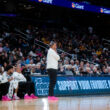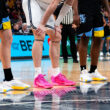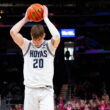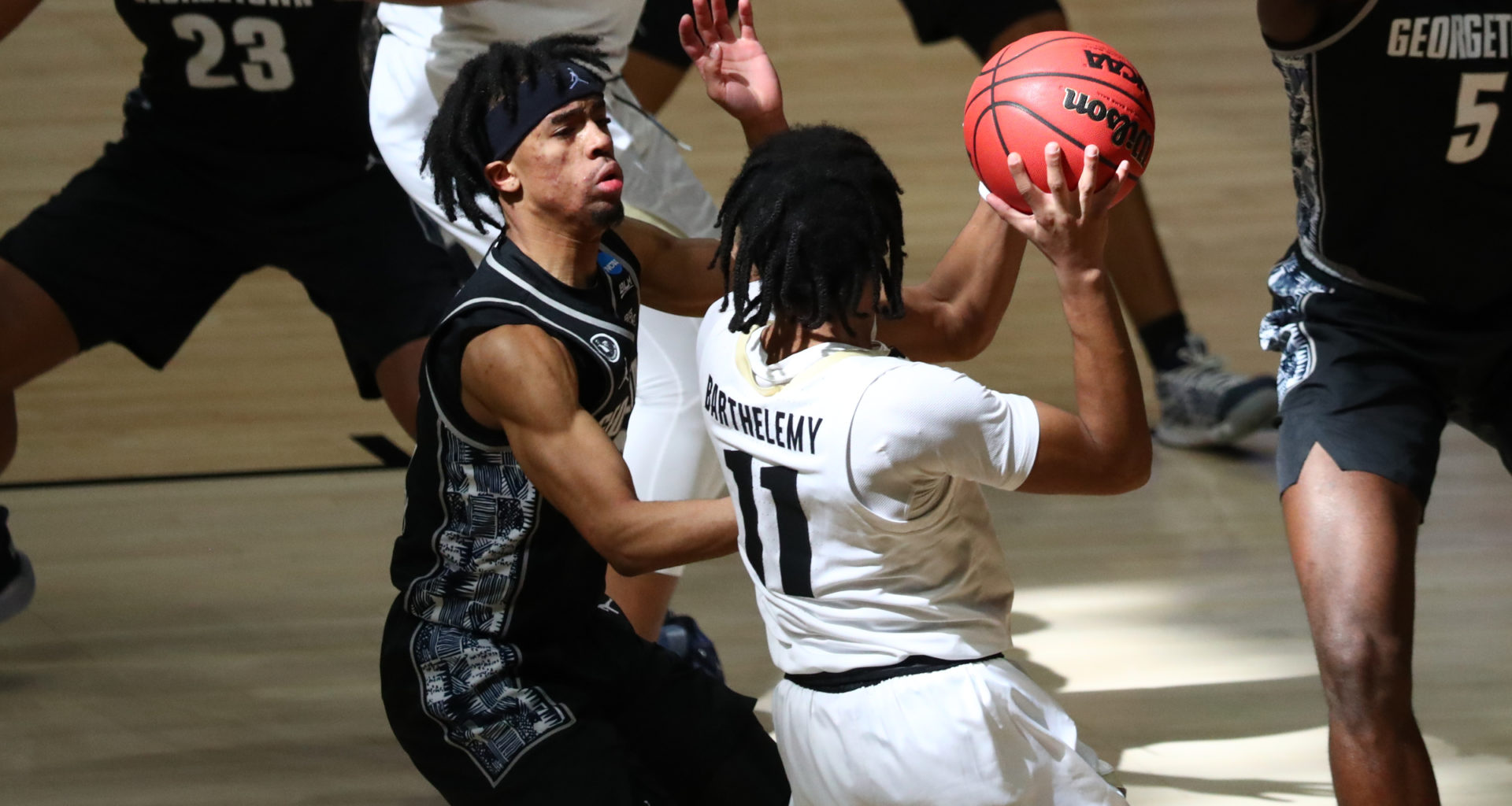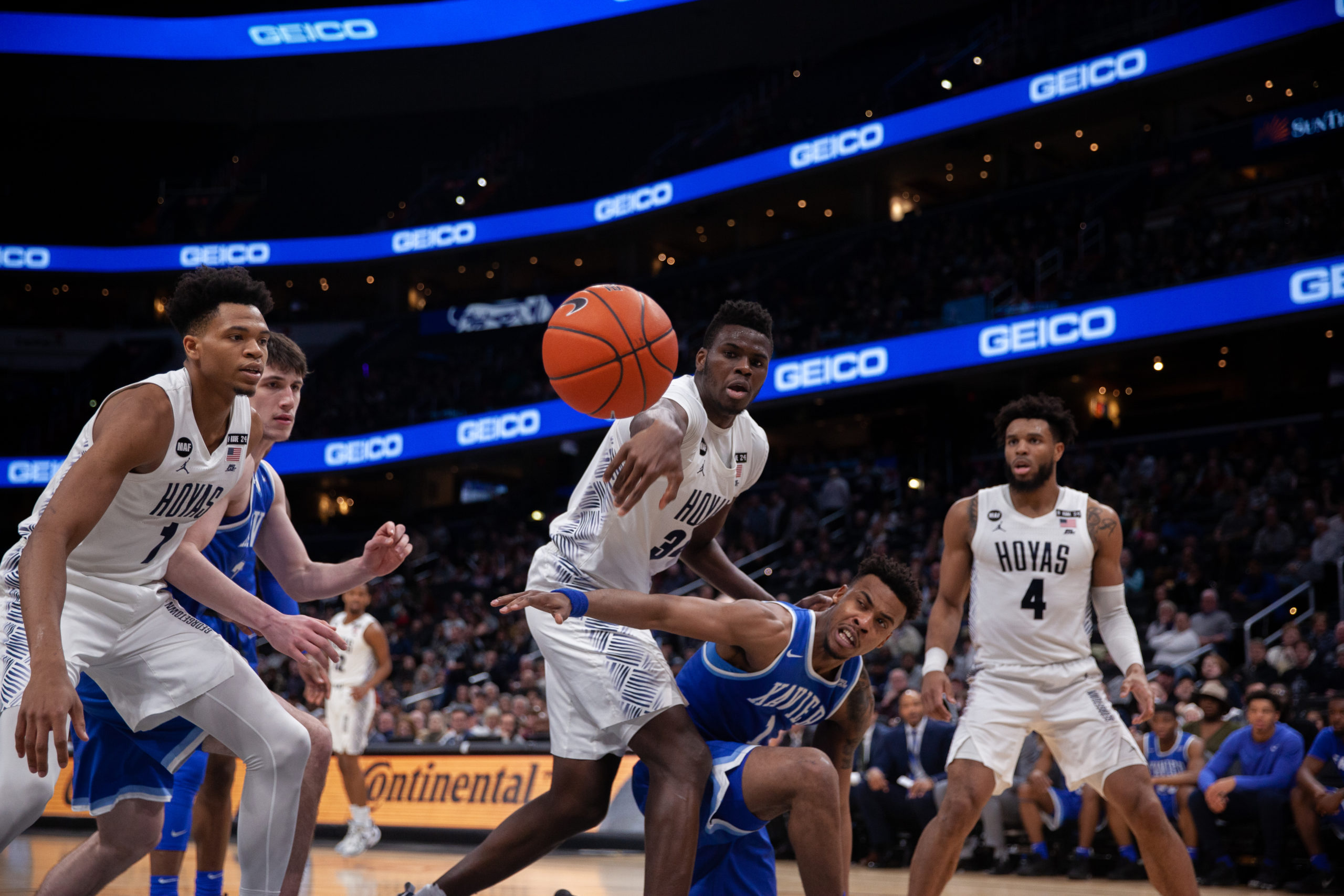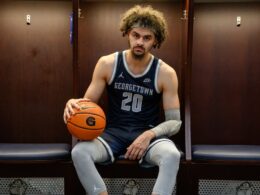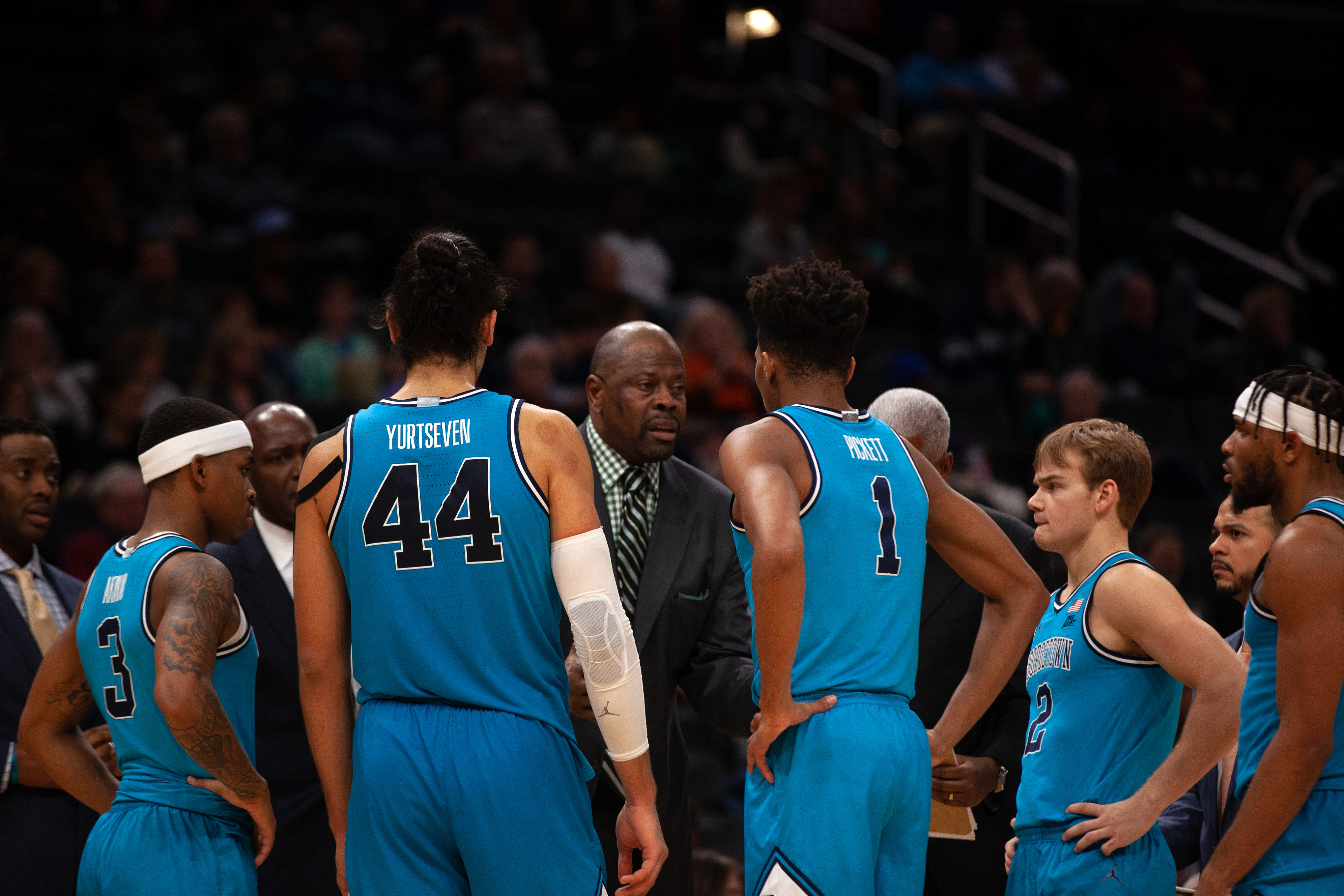It has been almost eight months since the Hoyas won their record eighth Big East Tournament Championship, featuring one of Georgetown’s best defensive performances of the 2020-21 season against a top-25 offense in Creighton. A lot has changed since then. How will the new look Hoyas fare defensively for the upcoming season?
Last season, Georgetown’s defense was inconsistent, but they did end the year ranked 49th in the country in defensive efficiency, according to KenPom, even after allowing an embarrassing 96 points against Colorado to end the season. Unfortunately, much of Georgetown’s defensive prowess departed. The transfer of Qudus Wahab, who was statistically one of the best shot blockers in the nation, to local rivals Maryland will be a major blow to the Hoyas’ paint defense. Wahab averaged 1.6 blocks per game, which led Georgetown and also ranked third in the conference. He also was the team’s leading rebounder, averaging 8 boards per game.
Chudier Bile, the second best shot blocker on the 20-21 team, also left. Bile, who was drafted to the G-League, averaged 0.8 blocks per game (13th in the Big East) to go along with a steal per game, which was tied for the second highest average on the team. Bile also played the role of a spark plug for the Hoyas. His energy and effort on the court were two of his most valuable assets, something that may be irreplaceable this season.
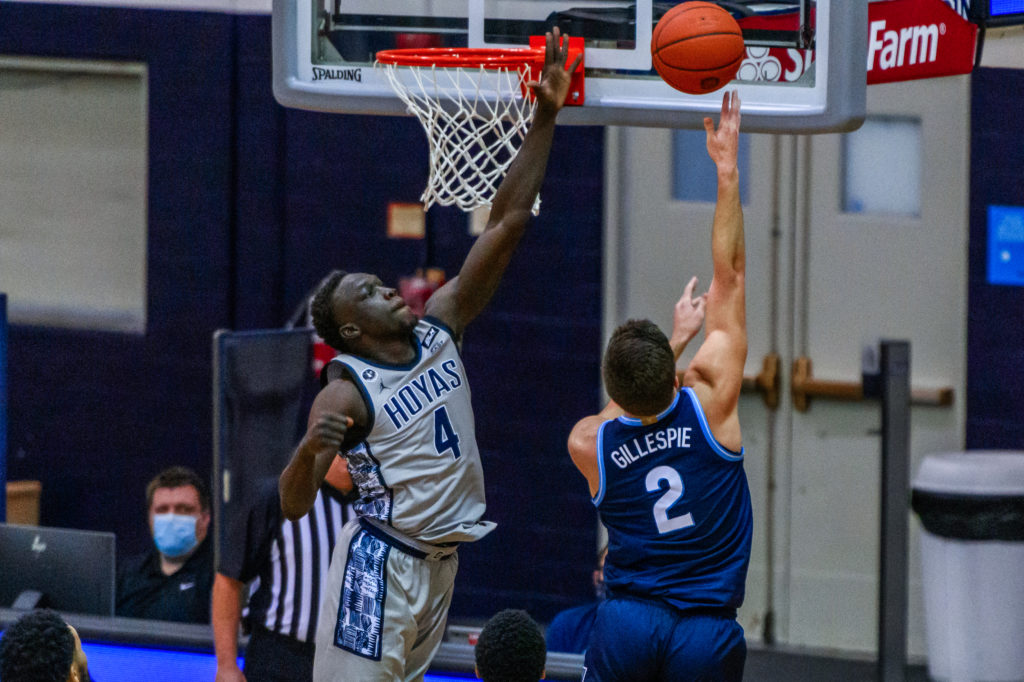
Bile and Wahab will both be missed, but the loss of Jamorko Pickett may take the greatest toll on the team. Pickett recently signed a two-way deal with the Detroit Pistons (and even scored his first points of his NBA career), and his stellar defensive efforts and senior leadership on the court, while not measurable in statistics, are surely attributes that Georgetown will sorely miss. Pickett ranked second on the team in both rebounds and steals, and his combination of length and speed allowed him to shut down some of the Big East’s best offensive weapons. Most notably, he held former Seton Hall forward Sandro Mamukelashvili to an abysmal 8 points on 18% shooting in the Big East Semifinal. Pickett’s communication and awareness was also very important for last year’s team, and it has carried over to his NBA career as well. It will be interesting to see who steps up to take the leadership reins from Pickett, but there are a few potential options.
The only main returning contributors are senior guard Don Carey, sophomore guard Dante Harris, and junior center Timothy Ighoefe. As for who will step up to become a defensive leader, one can assume it will likely be Carey and Harris. Both players were selected by Coach Ewing to attend the Big East Media Day in New York, where Ewing announced that Carey was designated as team captain. Both players will play a major role in leading the Hoyas, but will there be enough defensive talent to replace the departures? Surprisingly, the answer may be yes.
After Wahab announced his transfer, all eyes turned to backup junior center Timothy Ighoefe. Ighoefe’s minutes were fairly limited last season, but his defensive numbers were solid, even better than Wahab in some cases. Kenpom uses a statistic called block percentage, which measures the proportion of blocked shots per opponent two-point attempts. And although he had a much smaller sample size compared to Wahab, Ighoefe’s block percentage was nearly two percentage points higher than Wahab’s (8.0% to 6.2%). Both his offensive and defensive rebound rates were also higher than Wahab’s last season. Again, Ighoefe saw about a third of the time Wahab did, but he made the most of it when he was on the floor. While he was able to contest a high proportion of shots last season, not all of them were clean. Ighoefe averaged seven(!!) fouls per 40 minutes of play. This is a huge problem for the Hoyas, and one Ewing hopefully addressed in the offseason, especially due to the lack of depth at the center position.
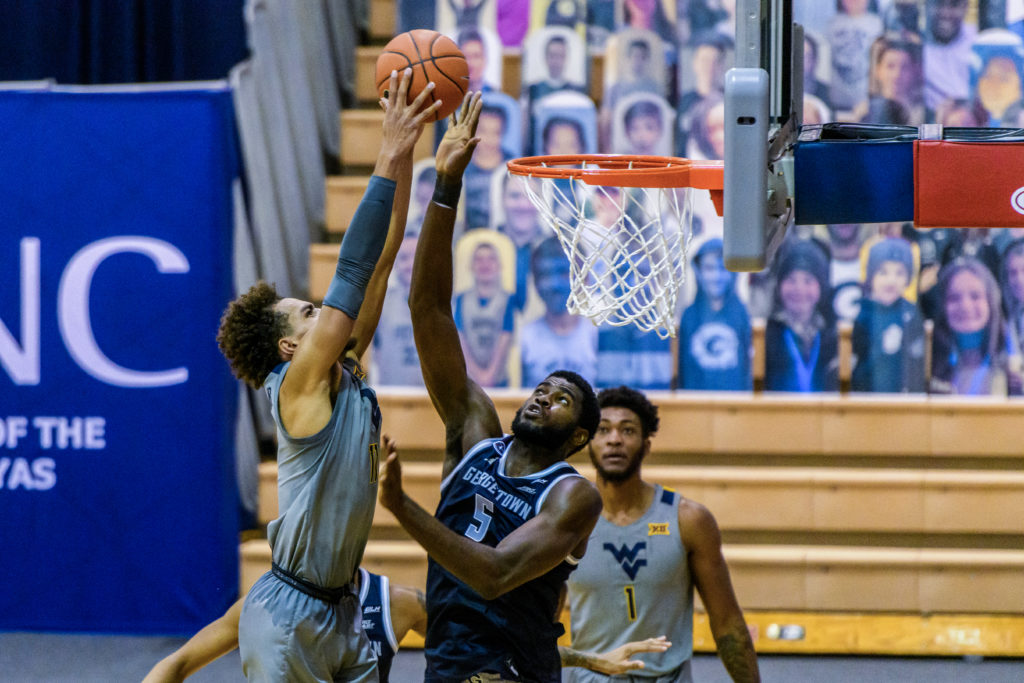
The other two centers on the roster are freshman Ryan Mutombo and junior Malcolm Wilson. Last season, Wilson did not see much time, but with Wahab leaving and Ighoefe’s foul troubles, one can anticipate that his minutes will increase slightly. The addition of Mutombo will be an interesting one for the Hoyas. The 4-star recruit from Georgia is listed at 7’2” on the Hoyas’ roster, so it is no surprise that many scouting reports have described him as a “good area rebounder and rim protector.” He averaged almost five blocks per game in high school, but it will be interesting to see how that number translates to high-level college basketball. Coach Ewing recently said Mutombo was a “work in progress” and “not as good defensively [as his father, Dikembe].” Transfer F/C Tre King was also supposed to be expected to contribute, but he was unfortunately dismissed from the team in October. Expect Ighoefe and Mutombo to split minutes, with Wilson being available as a third option at the center position.
There is a little more depth in the backcourt. Harris and Carey will be the two main contributors, and both have solid defensive numbers. Harris led the team in steals a year ago, and Carey was third. There are three incoming guards in the freshmen class, all of whom are very talented. G Aminu Mohammed will likely see the most minutes out of the freshmen and should be a great help defensively. Scouting reports have described the 5-star recruit as a “quality defender with great strength and energy,” and he also averaged 2.4 steals per game his senior year of high school. G Jordan Riley will also look to contribute right out of the gate. Riley’s freak athleticism and relentless work ethic are some of his most important assets, and he will be expected to cause havoc on the defensive end. In his shortened senior year, the New York Gatorade Player of the Year averaged 5.5 steals and 3.8 blocks per game. G Tyler Beard is another player Hoya fans may be excited about, especially when he can make plays like this, but it is up in the air how he will perform defensively, and how many minutes he will get with Harris reprising the starting point guard role.
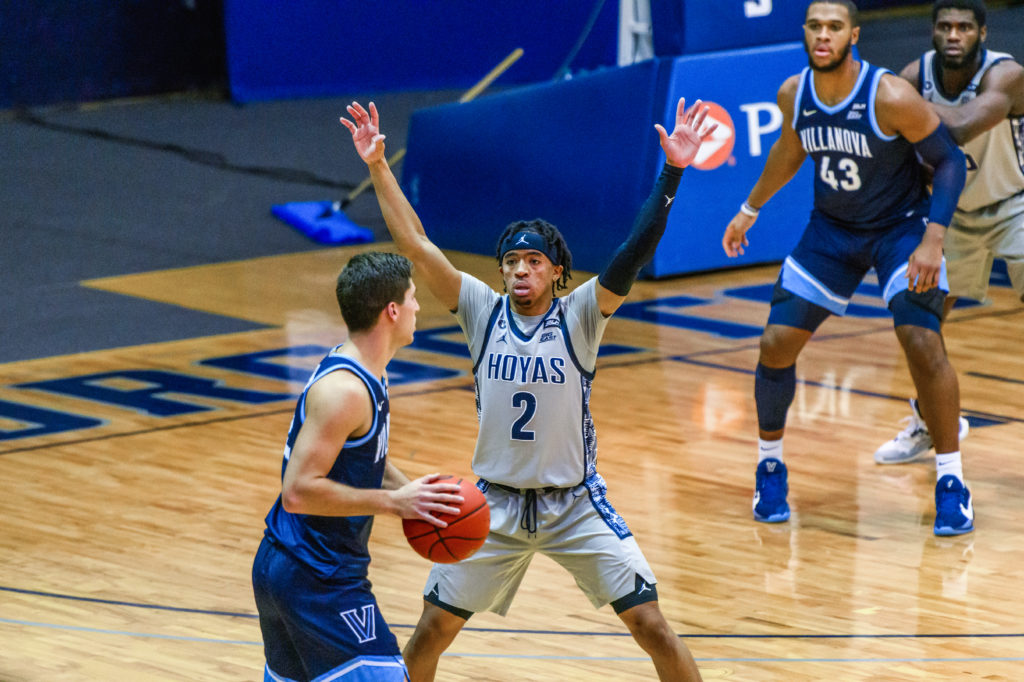
In the frontcourt, there isn’t too much depth for the Hoyas. Sophomores Kobe Clark and Collin Holloway will look to improve this season, with both seeing less than 5% of the teams total minutes last year. Clark did show signs of promise, though, especially with his 10 rebound game against UMBC in last season’s opener. Unfortunately, he did not play much else for the rest of the season, but he has the potential to be one of the best rebounding forwards on the squad.
Georgetown has two incoming forwards, Citadel grad transfer G/F Kaiden Rice and freshman wing Jalin Billingsley, but Rice was clearly not recruited for his defense. In fact, he only recorded one block and 11 steals for the Citadel last season, a team that ranked 305th in defensive efficiency. These numbers are shockingly low for a player who was on the court for 88.3% of his team’s total minutes. Billingsley’s size and athleticism should make him an asset on the defensive end, but it is unknown how many minutes he will get for the Hoyas.
All in all, don’t be surprised by a rocky start to the Hoyas’ season on the defensive end. With six incoming players and only two returning starters, it will take time for Coach Ewing to fully get a grip on his squad’s strengths and find a rotation that works. Don’t anticipate a completely organized team from the jump, especially with leaked information of an embarrassing 40-point loss to UVA in a not-so-secret scrimmage. But remember Hoya faithful, last season it wasn’t until after the COVID break when Ewing found his rotation and Georgetown was able to make its late-season surge. Hoya fans know what to expect out of players like Dante Harris and Don Carey, but with most of the preseason work being done out of the public eye, there is no way to tell how the team will truly play until Georgetown takes the court against Dartmouth on November 13th inside Capital One Arena. See you then, folks.
